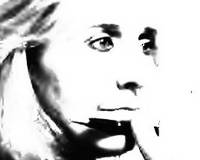Last month, I spent several afternoons driving around the East Side, documenting street after street of boarded up houses. Reading about the 15,000 foreclosed homes in Cleveland barely prepared me for the experience of witnessing these devastated neighborhoods firsthand.
Just as striking as the abandoned houses were the empty storefronts and the decaying factories. But the myriad vacant apartment buildings screamed the message the loudest.
"Cleveland is disappearing!"
Each empty apartment complex represents scores, or even hundreds of people who no longer live in Cleveland. The vacancies mirror the abandoned factories and the loss of thousands of manufacturing jobs in Cleveland.
On the right side of the page I have included a slideshow of some of the abandoned apartment buildings that I photographed last month.
Another intriguing statistic is the number of Clevelanders incarcerated outside of the city, who are counted as residents of the district where the prison is located, mostly sparsely populated rural areas. (Even though they do not vote, pay taxes, use the roads or any municipal services such as schools, libraries, etc.)
The number in the year 2002 was 10, 441 Clevelanders imprisoned in other locales.
Because the prison population is growing at an alarming rate nationwide, I am certain that you can add a couple thousand more to that number to reflect the current 2008 statistics.
Census figures show Cleveland has lost more than half of it's citizens since 1950, and nearly 7% of it's population since 2006. At 444,000 people, Cleveland ranked as the 40th largest city in the U.S.; quite a drop from being the 5th largest American city in 1920.
A Plain Dealer article last summer forecast the population decline continuing, and quoted a demographer at Cleveland State, Mark Salling, who predicted that by 2015 the number of Clevelanders will dip below 400,000.
I'm wondering if Mr. Salling took the foreclosure crisis and the booming prison-industrial complex into account at that time. I am guessing the 2010 census will reveal an even more dramatic decline in population than the Plain Dealer article predicted.
My recent wanderings through the city's neighborhoods prompt childhood memories of a vastly different Cleveland.
Not quite the idyllic town of Dick Feagler's reminiscing; I recall a city blackened by factory smoke, with a stink that sickened my stomach. It was crowded and noisy, a dangerous but exciting adventure for this suburban child, when my parents loaded us kids into the big Ford Country Squire wagon to visit my grandparents, who lived near East 131st and Miles, or my Uncle, who had a house near East 70th and Superior.
Those teaming enclaves, the neighborhoods of working class immigrants, are now deteriorating into ghost towns, whose empty and decaying buildings will soon fall victim to the demolition crews.
______________________________________________________
"I went back to Ohio but my city was gone. There was no train station, there
was no downtown. Southtown it had disappeared. All my favorite places. My city
had been pulled down, reduced to parking spaces.
Ay! Oh! Where'd you go Ohio?
I went back to Ohio, but my family was gone. I stood on the back porch, there
was nobody home. I was stunned and amazed. My childhood memories, saw this world past, like the wind through the trees."
Pretenders
"My City Was Gone"
The sustainability crowd dubbed Cleveland the "Green City on a Blue Lake" several years ago. With the speed I see grass and weeds fill the empty lots, which have been replacing buildings in this town, Cleveland is rapidly earning the "green" description in that eco-hopeful moniker.
What will the city look like 7-10 years from now?
Will green space eventually reclaim the old working class industrial neighborhoods, or will new development take the place of the blighted old buildings and the recently vacant property?
Will the regions' greatest asset, Lake Erie's fresh water, become even more valuable as climate change and global warming begin to spark new migration patterns away from the sun belt and back to the rust belt?
What I do know is this: The Cleveland my children, and eventually my grandchildren, will know is going to be be a very different city than the Cleveland my parents knew, or the city of my own childhood.

















